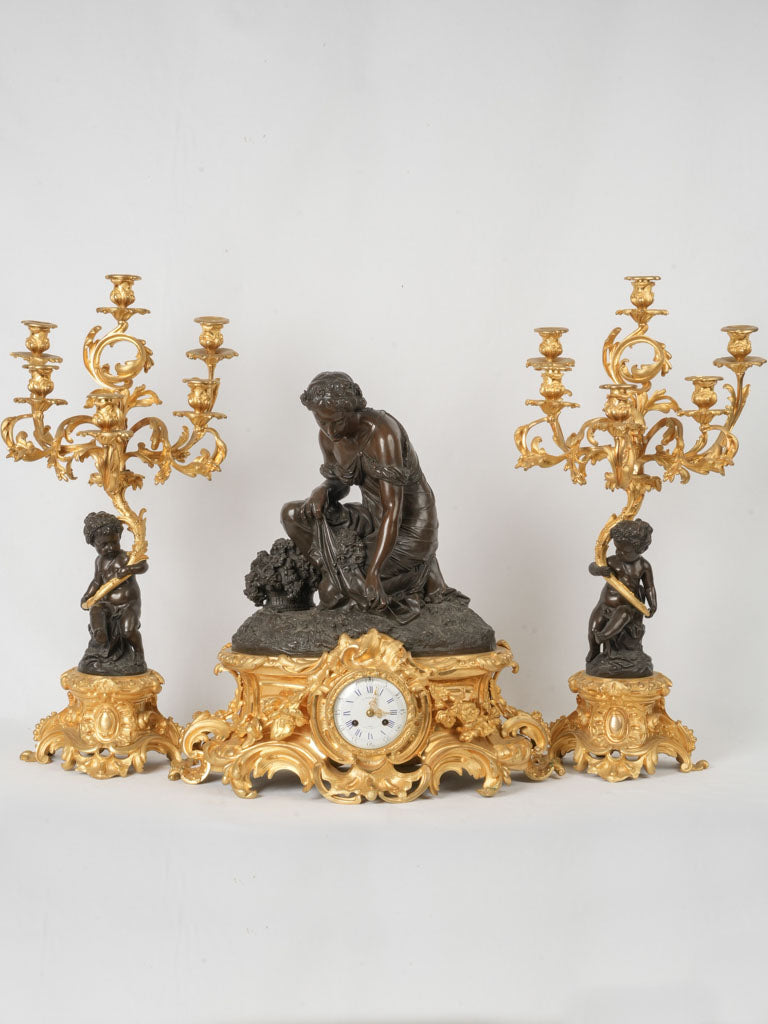

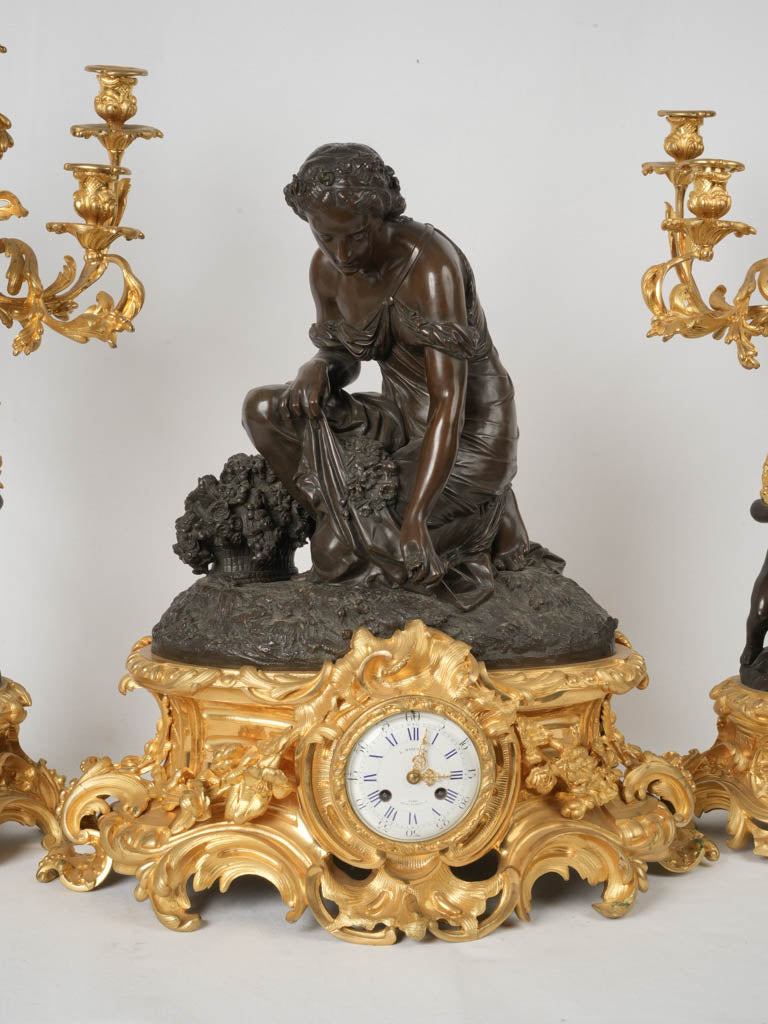
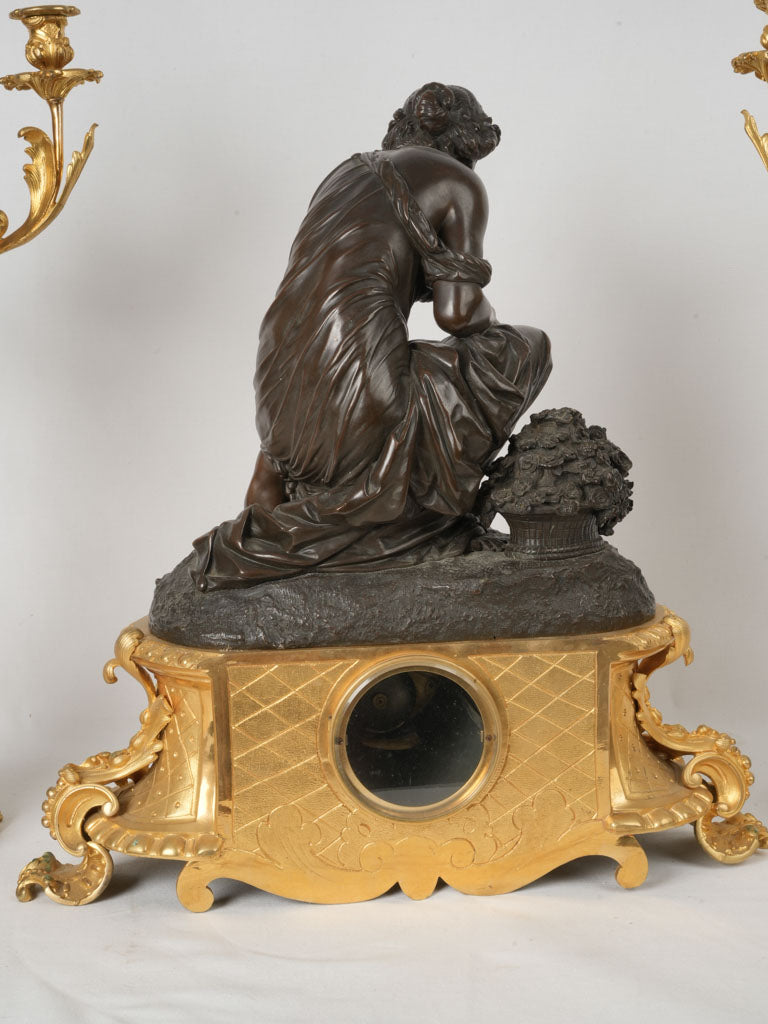
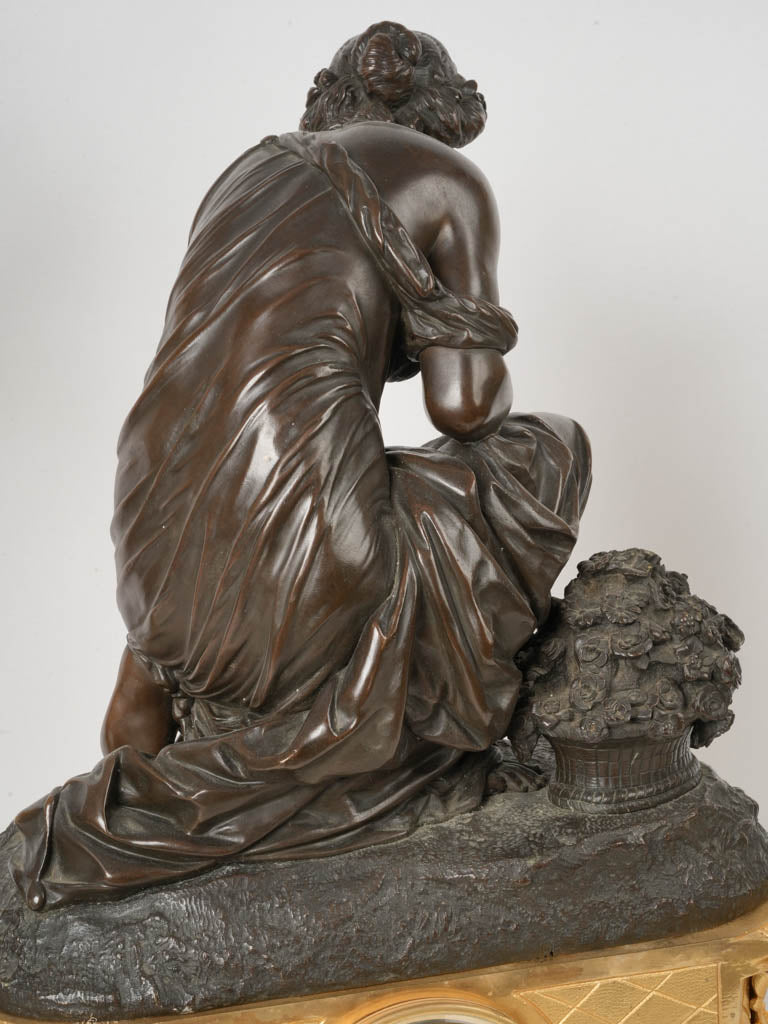
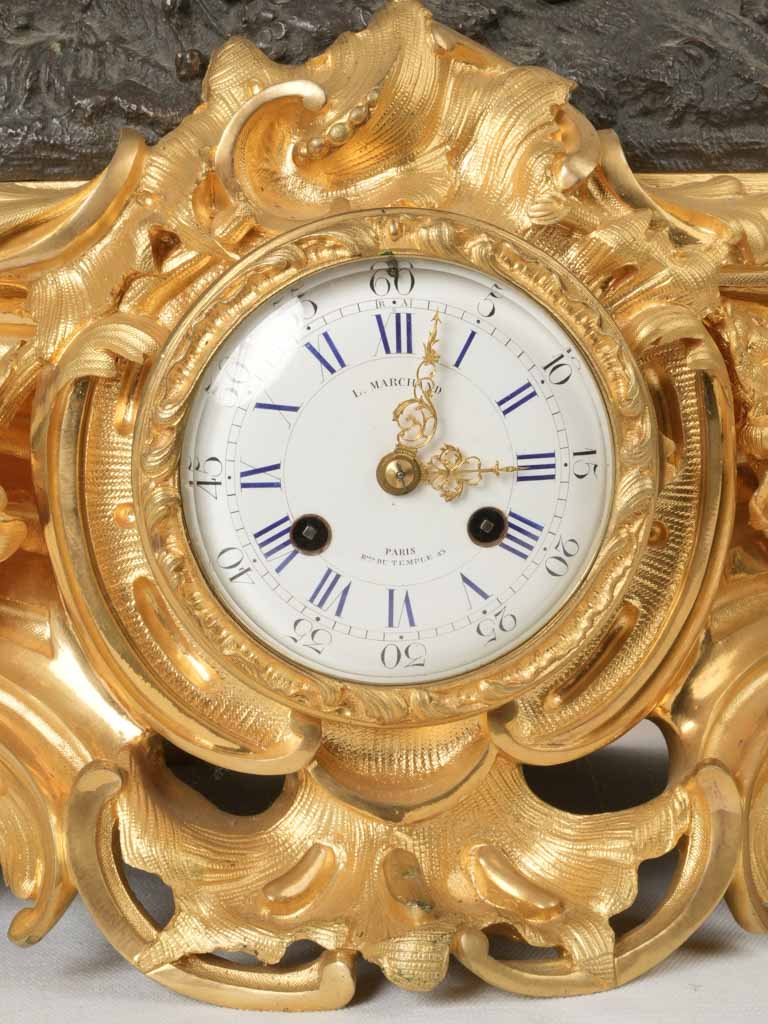
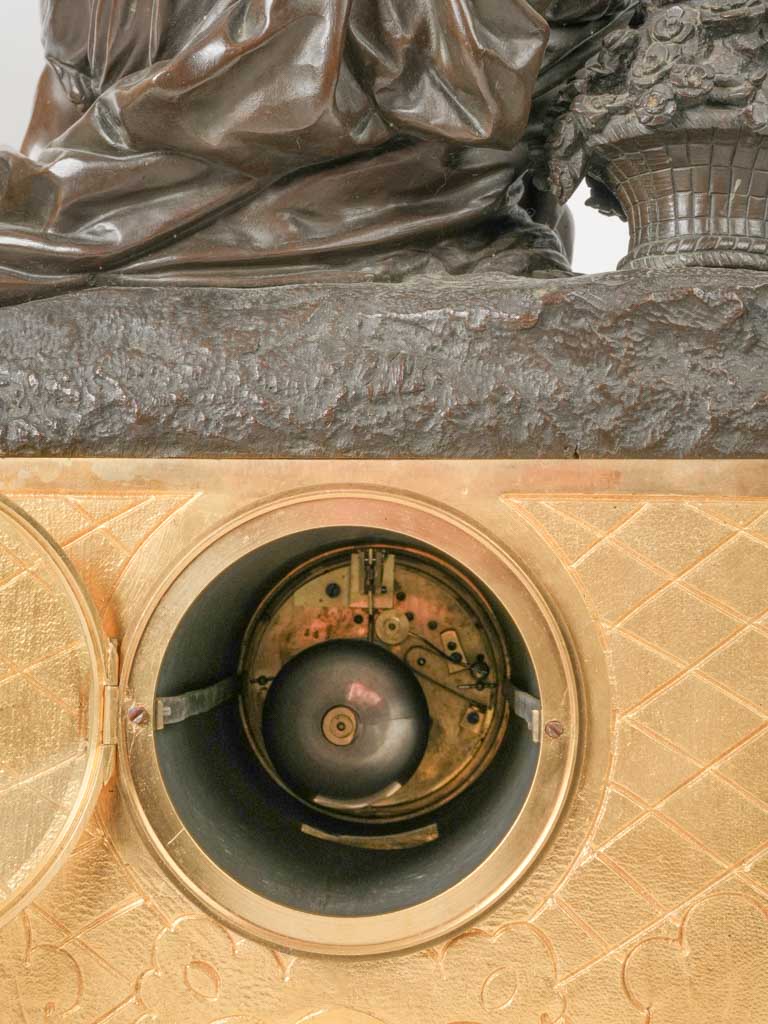
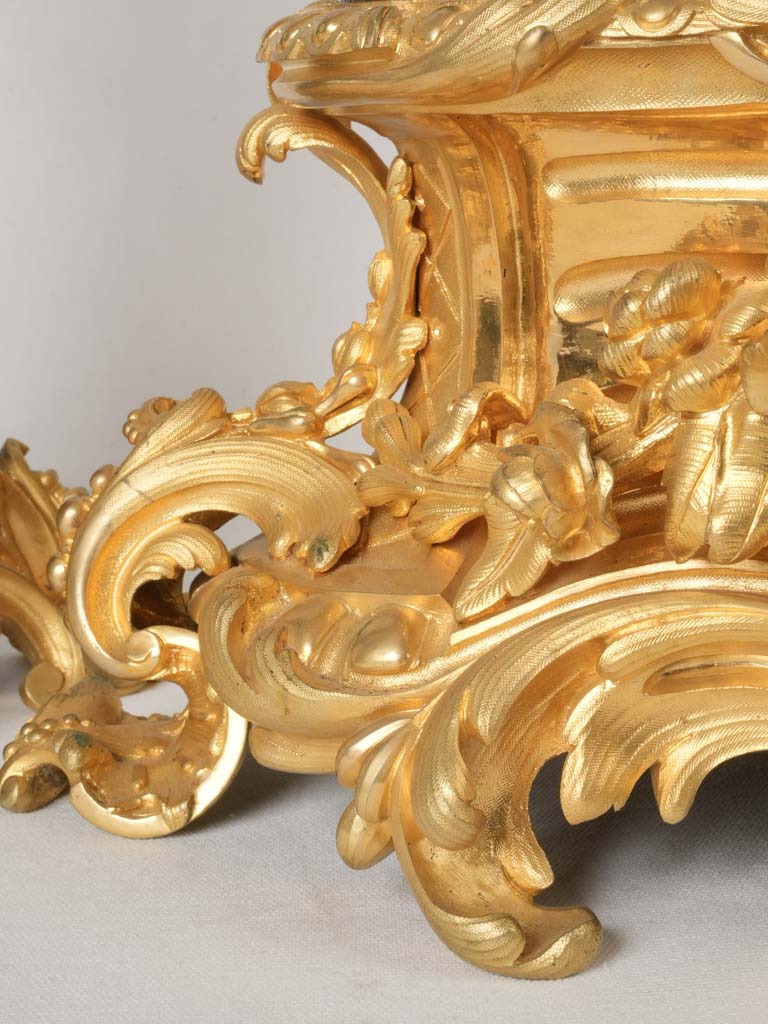
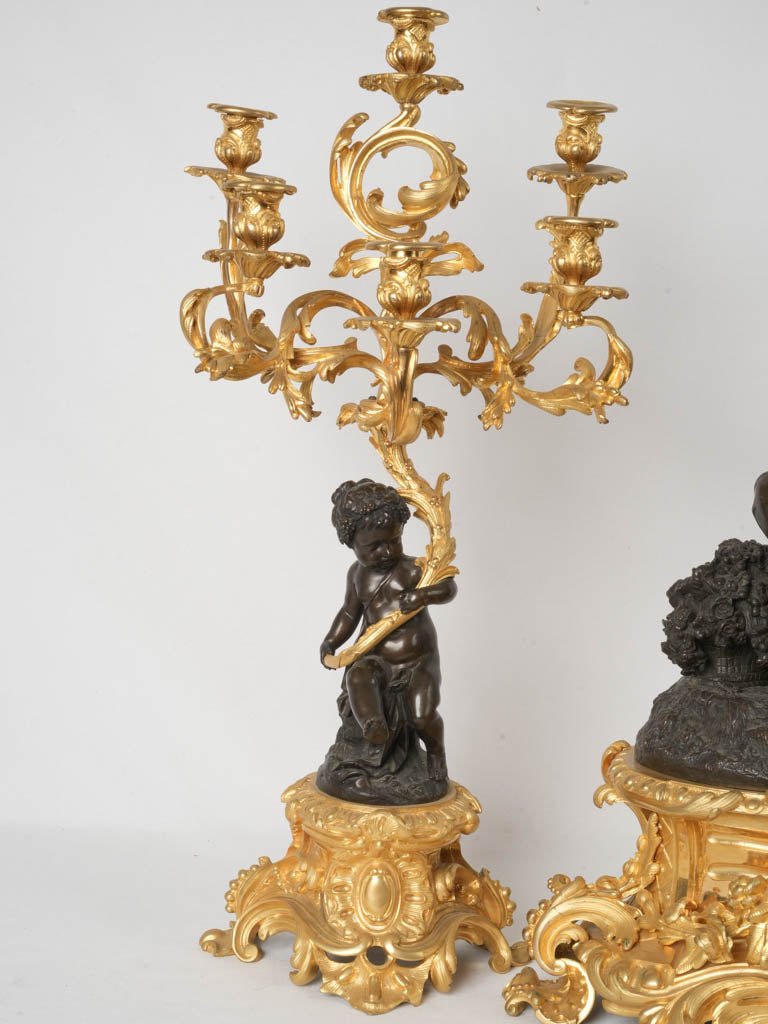
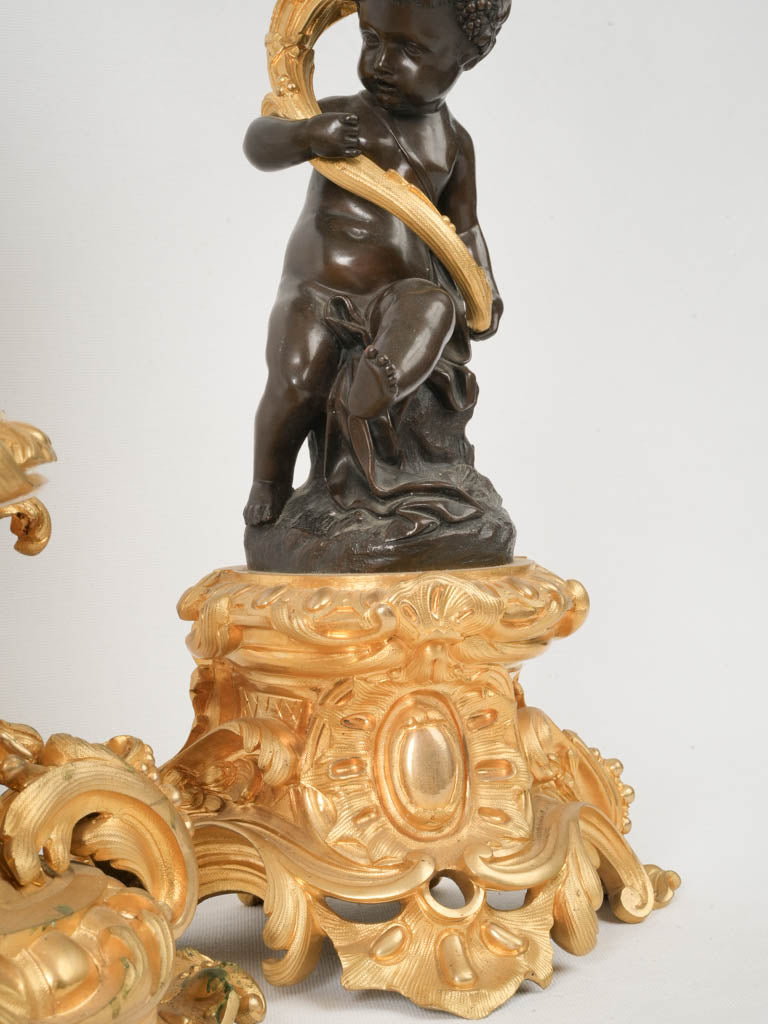
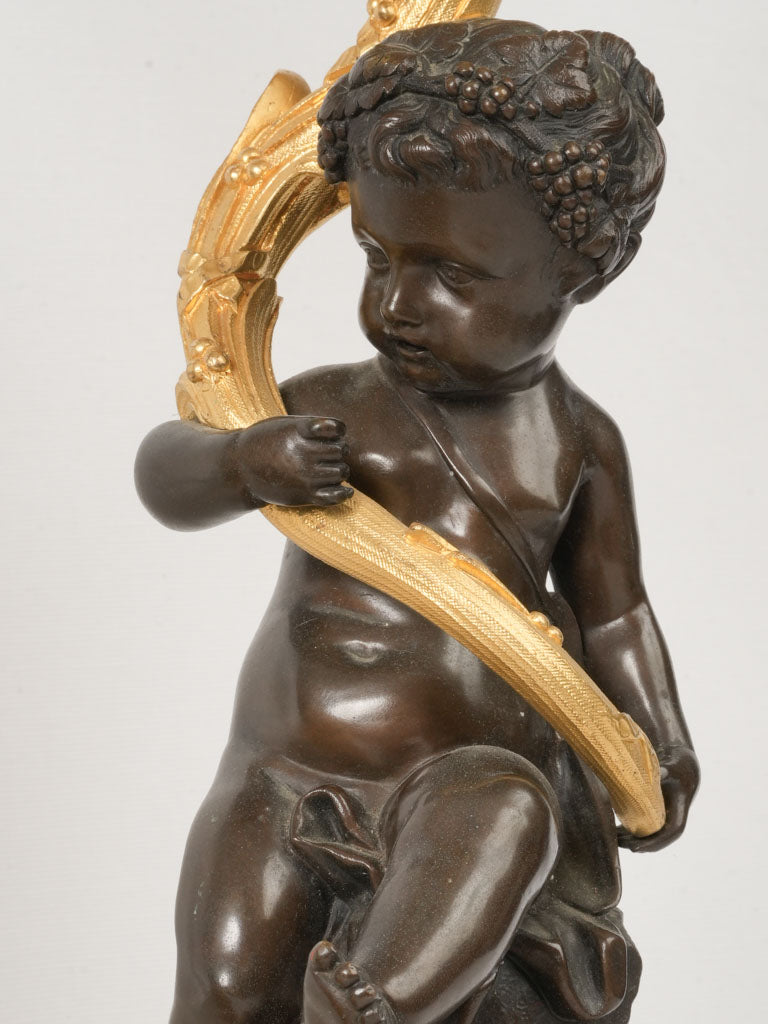
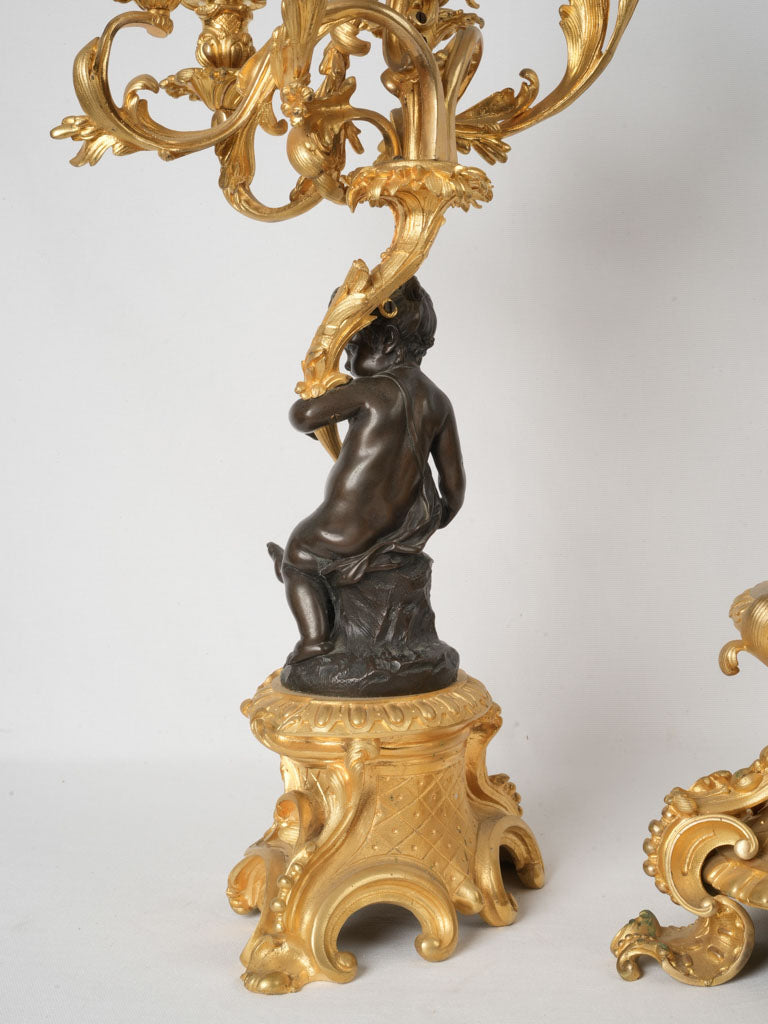
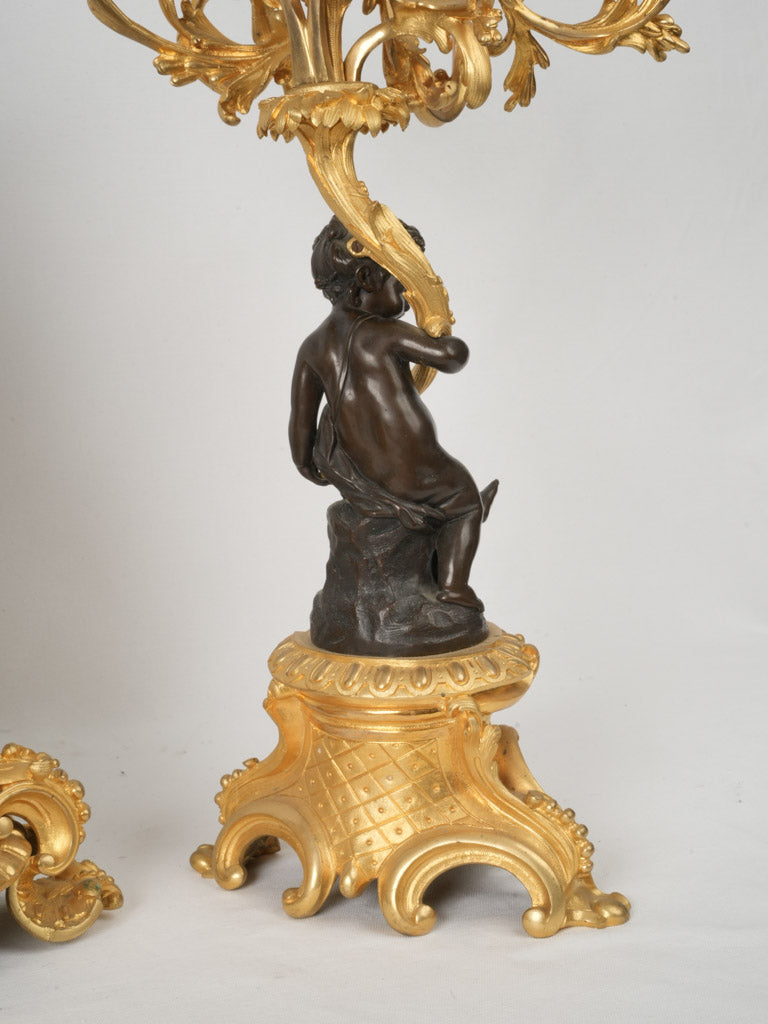
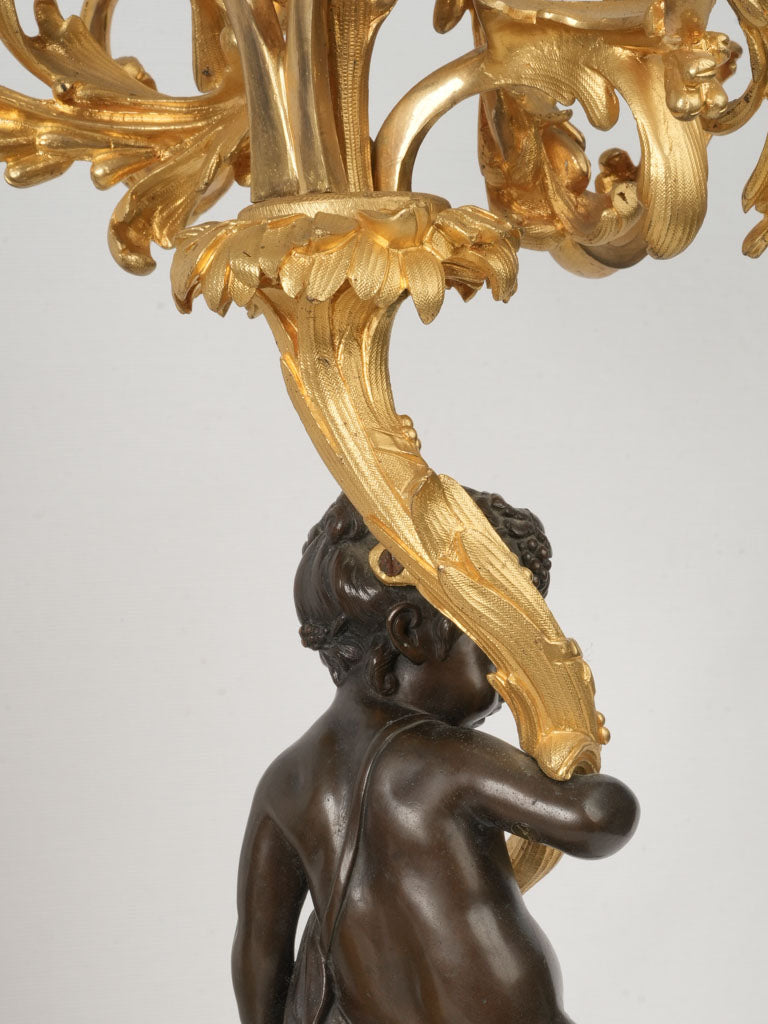
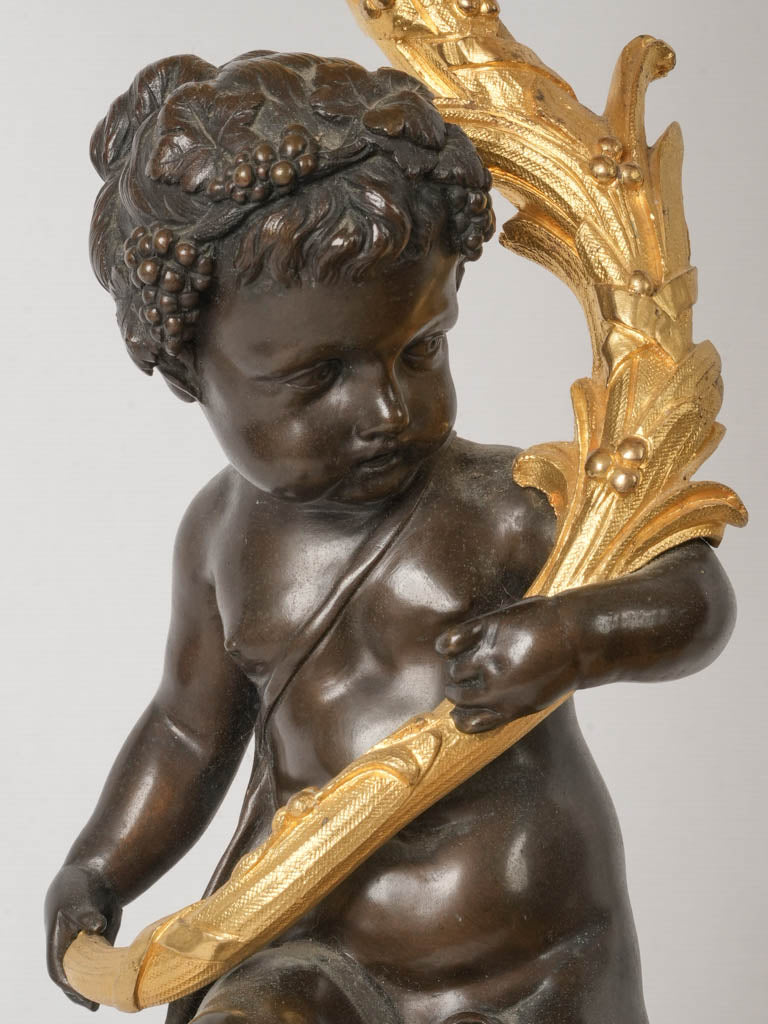
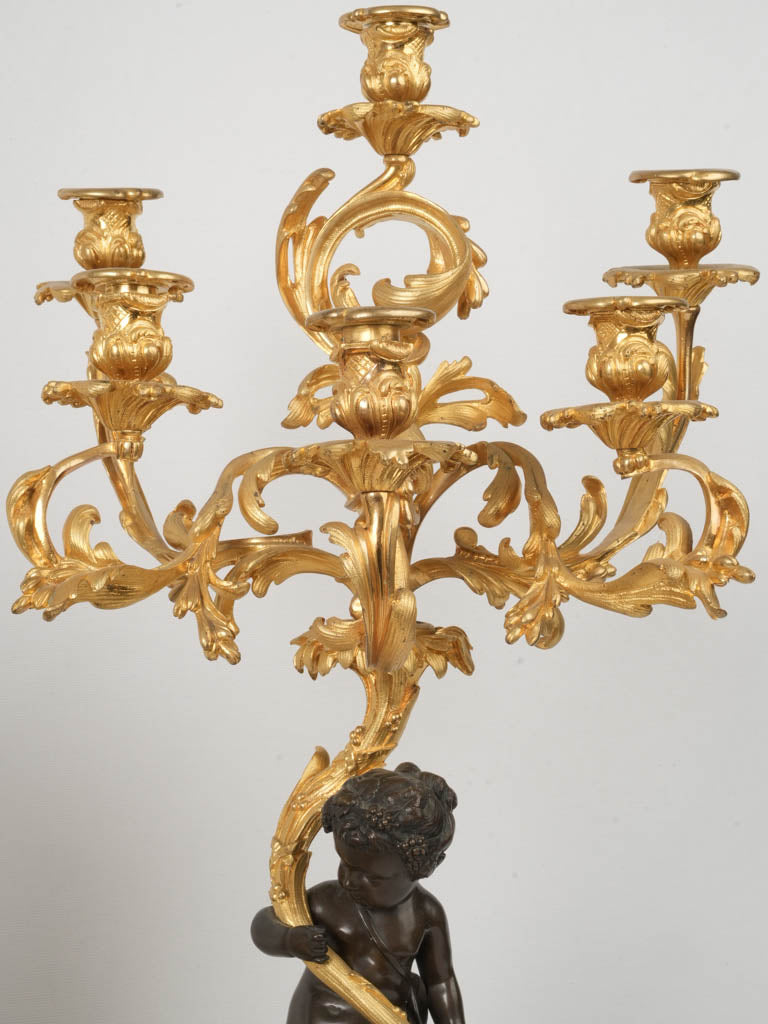
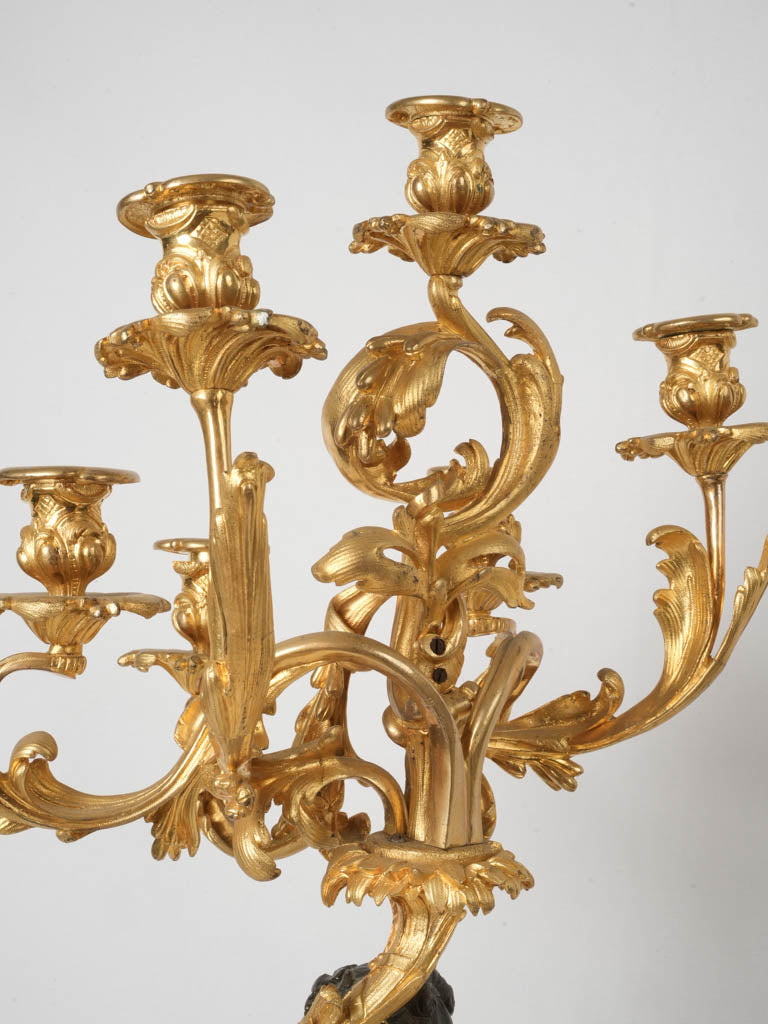
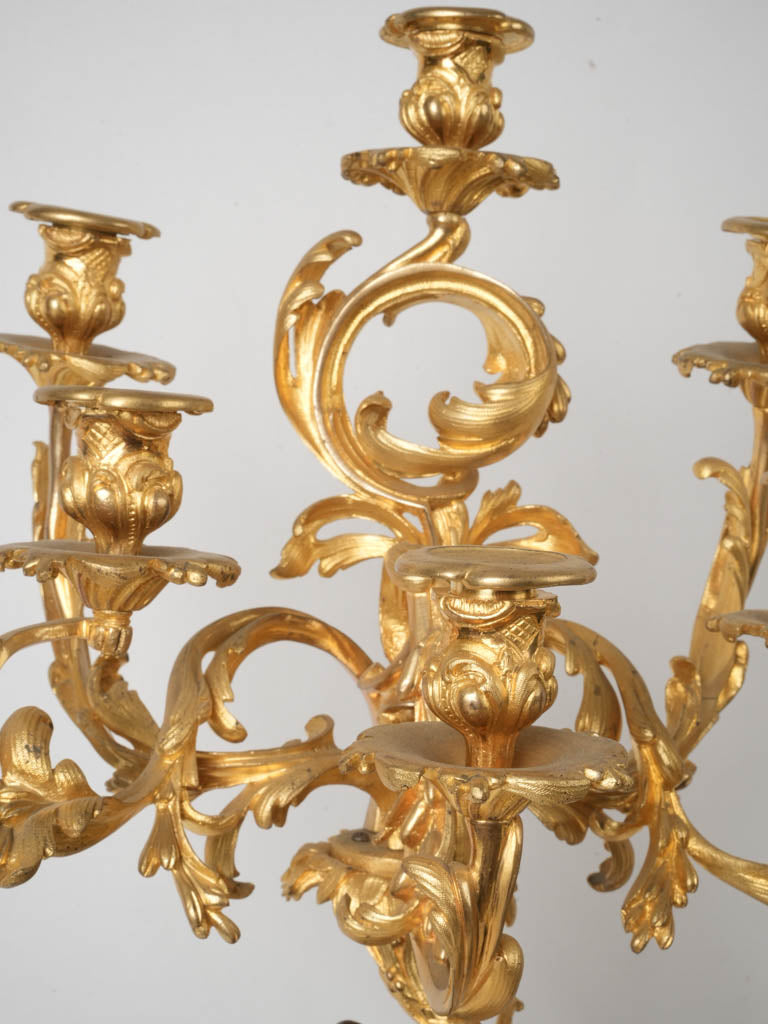
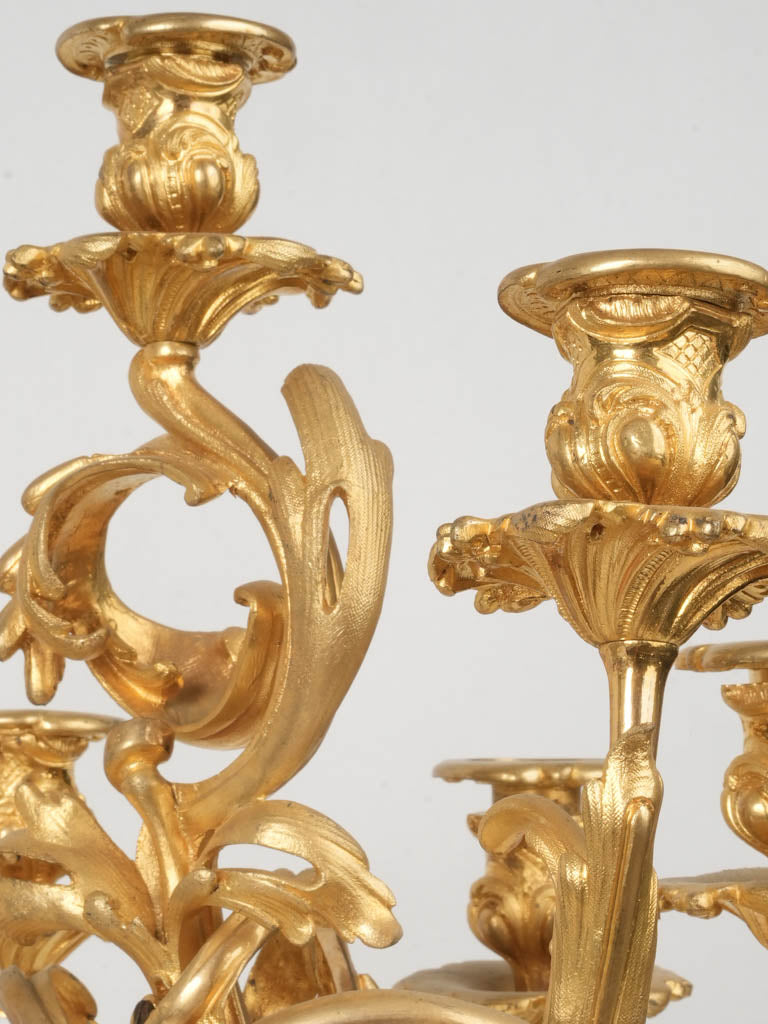
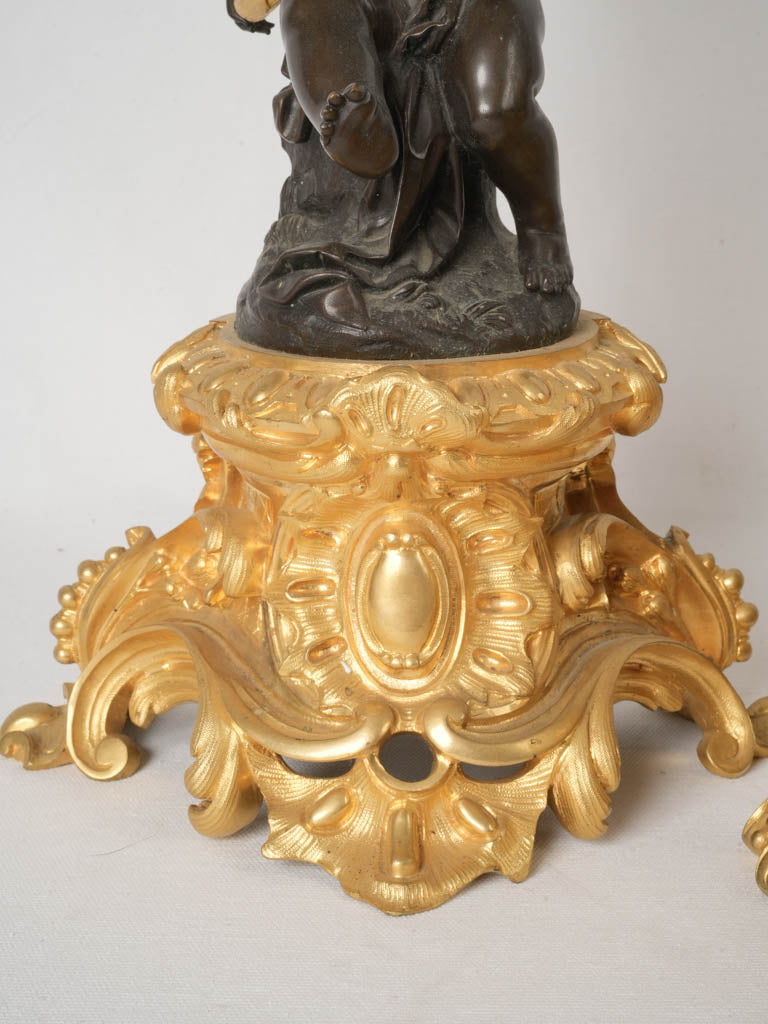
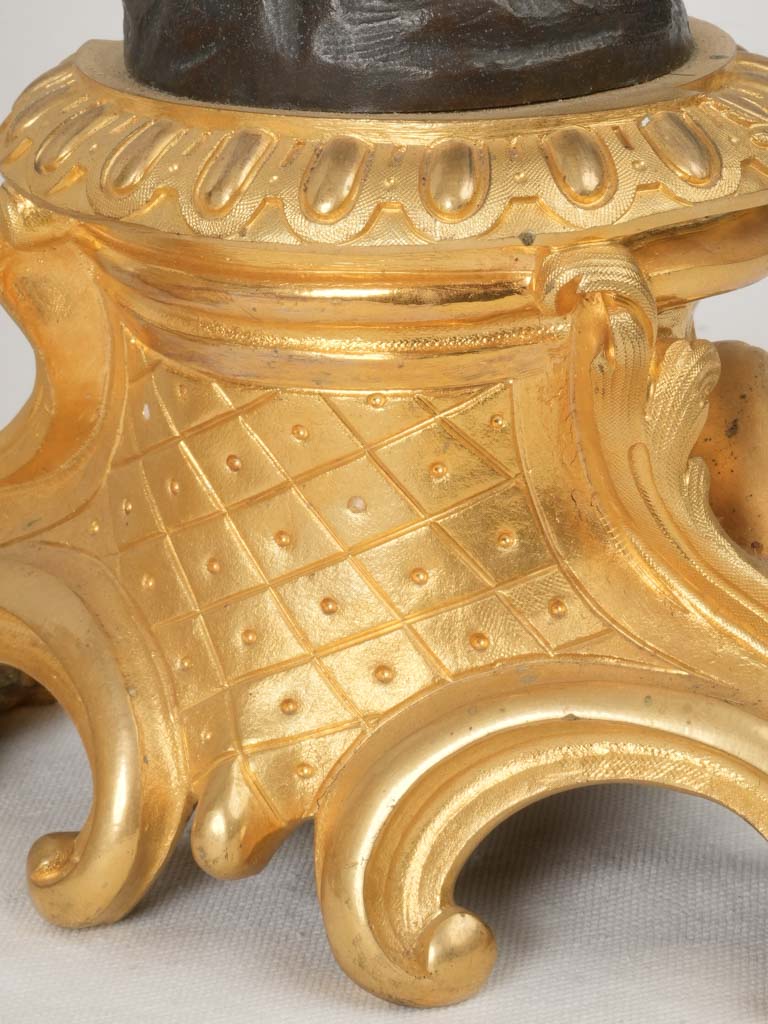
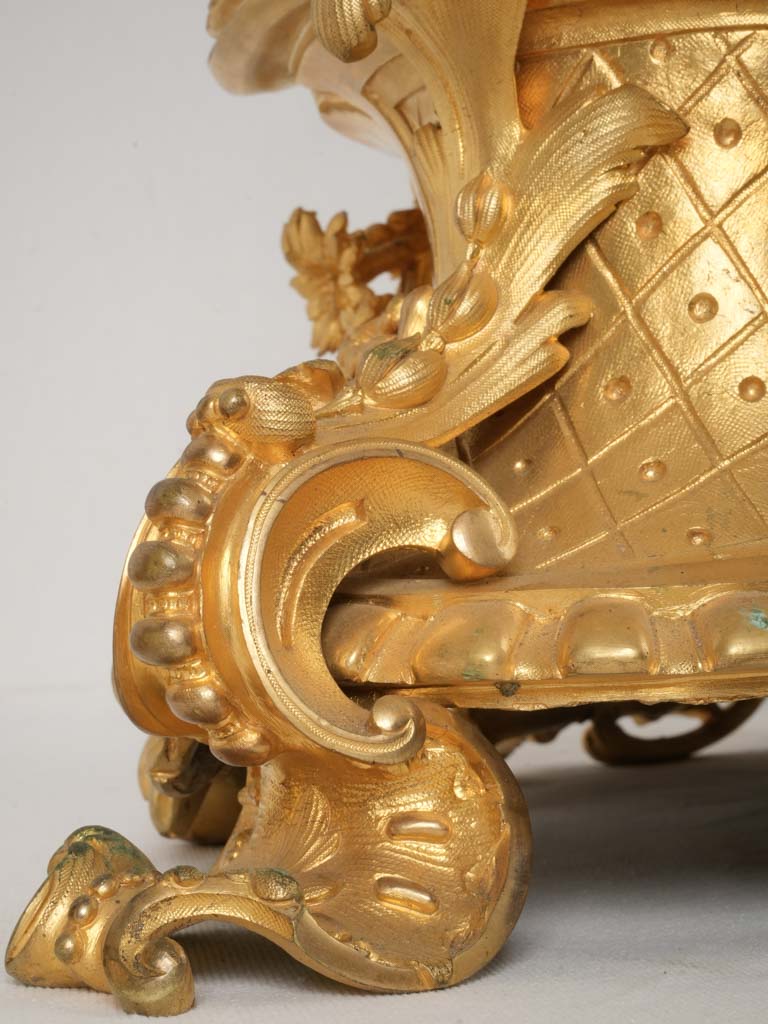
Napoleon III Period Mantel Garniture by Schoenewerk & Marchand
Free shipping to USA
The price is all-inclusive, no duties, taxes or shipping.
This exquisite Napoleon III mantel garniture features finely cast bronzes by Pierre-Alexandre Schoenewerk, with a rich brown patina contrasted by ornate gilt bronze Rocaille accents. The porcelain clockface at the center, signed by the renowned clockmaker Marchand of Paris, is framed by an elegant gilt bronze base, which complements the fluid lines of the Rococo revival style popular during the mid-19th century.
The central sculpture depicts a serene lady tenderly gathering flowers, showcasing the remarkable level of detail for which Schoenewerk is celebrated. Flanking the clock are two intricately designed six-arm candelabras, also in the Rocaille style, featuring playful cherubs that add a touch of whimsy to the set. The detailed rendering of both the human figure and ornamental elements demonstrates the masterful craftsmanship characteristic of both artists involved.
Originally from a French château, this garniture set represents the pinnacle of Napoleon III era opulence, combining the artistry of bronze sculpture with the precision of Parisian clockmaking. While the clock is decorative and missing a key, it remains a testament to the high level of decorative art during this period.
Pierre-Alexandre Schoenewerk (1820–1885) was a prominent French sculptor of the 19th century, known for his neoclassical style and detailed bronze work. Born in Paris to German parents, Schoenewerk trained under renowned artists such as David d'Angers and Pierre-Jules Jollivet. His works can be found in prestigious institutions, including the Louvre and the Musée d'Orsay. He is celebrated for his bronze sculptures, which often depict mythological or allegorical subjects, and he received the prestigious title of Chevalier of the French Legion of Honor in 1873. Some of his well-known works include Jeune Tarentine and Leda and the Swan, which showcase his delicate, detailed approach to human forms.
The clockmaker Marchand, refers to a prestigious 19th-century French bronzier, Léon Marchand, who founded a workshop in 1820. His workshop specialized in producing high-quality bronze works, including clocks, candelabras, and other decorative objects. Marchand's pieces were exhibited at the 1862 International Exhibition in London, where he showcased collaborations with esteemed sculptors, including Schoenewerk. His workshop's expertise in both bronze casting and gilt work made it highly sought after for luxurious interior decorations during the Second Empire.
Light wear.
clock measures 23¾" high, candelabras 29½" high each x 11¾" diameter
clock measures 60cm high, candelabras 75cm high each x 30cm diameter
Choose options






















Napoleon III Period Mantel Garniture by Schoenewerk & Marchand
Sale priceUS$25,710

